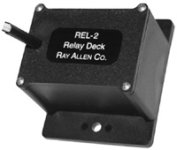jherzog
I'm New Here
Hello,
I have an RV9A that uses a Ray Allen actuator and relay for elevator trim. There are two sets of up/down switches wired in parallel to the relay -- one on the stick, the other on the panel. The behavior I'm encountering is the same for both switches, so the issue does not appear to be with either of those.
What's happening is, about half of the time, trying to add down trim will not cause movement unless I first use a bit of up trim. That seems to free something up, and down trim begins working again.
Has anyone encountered something like this?
Thanks in advance,
Jordan
I have an RV9A that uses a Ray Allen actuator and relay for elevator trim. There are two sets of up/down switches wired in parallel to the relay -- one on the stick, the other on the panel. The behavior I'm encountering is the same for both switches, so the issue does not appear to be with either of those.
What's happening is, about half of the time, trying to add down trim will not cause movement unless I first use a bit of up trim. That seems to free something up, and down trim begins working again.
Has anyone encountered something like this?
Thanks in advance,
Jordan





